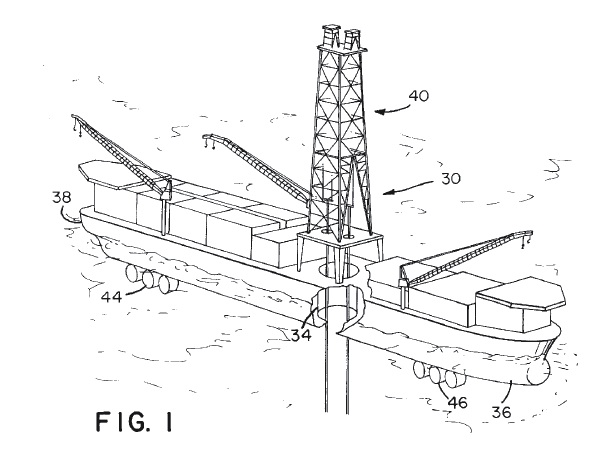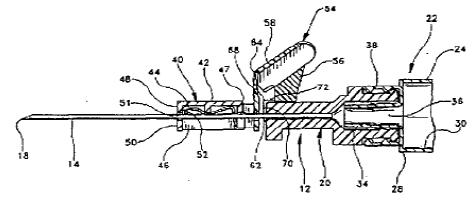By Jason Rantanen
General Protecht Group v. International Trade Commission (Fed. Cir. 2010)
Majority opinion authored by Judge Dyk, joined by Judge Prost. Dissenting opinion by Judge Newman.
ITC determinations are subject to review by the Federal Circuit under the standards of the Administrative Procedure Act, which allows for de novo review of legal determinations and review of factual findings for substantial evidence. Although the parties in this appeal largely agreed on the meanings of the relevant claim terms, the majority concluded that the ITC's infringement finding lacked substantial evidence. Writing in dissent, Judge Newman asserted that the majority's conclusion was based on issues never raised by the appellants.
* * * *
The three appellants in this appeal, GPG, Trimone, and ELE, import ground fault circuit interrupters ("GFCIs") into the United States. Pass & Seymour, Inc. obtained an exclusion order from the ITC following the Commission's finding that the devices infringed three patents: 7,283,340; 5,594,398; and 7,164,564.
On appeal, although the appellants raised "numerous issues" challenging the Commission's determination of infringement, the panel found most of them unpersuasive. Nevertheless, the majority did conclude that the Commission had erred in some respects, finding that (1) GPG's 2003 and 2006 GFCIs and ELE's 2006 GFCIs do not infringe the '340 patent because they lack a "detection circuit; (2) Trimone's 2006 GFCI's and ELE's 2006 GFCIs do not infringe the '340 patent because they lack the "load terminals" of the patent; and (3) GPG's 2006 GFCI's do not infringe the '398 patent because they perform the function of the "latching means" in a substantially different way than the structure disclosed in the patent. In all other respects, the court affirmed the lower tribunal's determination.
The disagreement between the majority and dissent is illustrated by their positions on the "detection circuit" claim term, although it permeates the determinations on the other two terms as well. The Administrative Law Judge construed "detection circuit" to mean "at least one detection circuit having a circuit segment connected between the line terminals and configured to generate a predetermined signal in response to detecting a proper wiring condition, which occurs when the line terminals are connected to a source of AC power.” Neither ELE nor GPG challenged the construction on appeal; however, they argued that the Commission erred in adopting the ALJ's infringement finding. The majority agreed that this element was not infringed:
The construed claims require the “detection circuit” to “generate a predetermined signal in response to detecting a proper wiring condition.” Initial Determination, slip op. at 85 (emphasis added). But as Dr. Harman’s own testimony makes clear, his “predetermined signal” is merely the “current flow” originating from the hot line terminal. J.A. 40,396. The identified circuit does not generate this current; it is the current that comes from the AC power connection. So instead of detecting a proper wiring condition and generating a signal in response, as the properly construed claim requires, the accused GFCIs simply have power to operate, or not. Dr. Harman’s testimony is not substantial evidence to support a finding that ELE’s 2006 GFCIs infringe claims 14, 18, and 30 of the ’340 patent.
(Slip Op. at 9). The majority applied similar reasoning with respect to GLG.
In describing both ELE and GPG's arguments, the majority paid particular attention to the dissent's assertion that the appellants did not raise this issue, responding in a footnote that:
The dissent suggests that the parties did not raise this argument, but ELE clearly argued that “[b]y treating the ‘predetermined signal’ as including whatever AC power happens to arrive at a building from the local power plant, the Commission has broadened this limitation beyond all recognition and effectively reads it out of the claim.”
(Slip Op. at 8, fn. 3).
In a strident dissent, Judge Newman took a significantly different view of the ITC decision and majority opinion on appeal:
The Initial Decision of 170 pages and the Commission’s supplemental rulings of 32 pages present a full understanding of the technology, with rigorous discussion of the evidence and extensive analysis, findings, and conclusions. This court now finds its own facts, applies theories that were not raised by any party, uses incorrect standards of review, and creates its own electrical technology contrary to the uniform and unchallenged expert testimony.
(Dissent at 2). With respect to the majority's "detection circuit" reasoning, after an extensive discussion of the Commission findings, Judge Newman concluded that:
[t]he court creates a theory not proposed by any party, and rules that a signal that originates from the line terminal is not generated by the detection circuit and thus is not “generated.” See Maj. Op. at 9 (“The identified circuit does not generate this current; it is the current that comes from the AC power connection.”). There is no support for this theory. The only signal generated in response to proper wiring as described in the ’340 patent is “generated” in the same way as in the accused devices, that is, the detection circuit uses power from the properly wired line terminals to supply a signal (claim 14) or response (claim 30) that allows the device to be reset. That is how the Commission, and the parties, interpreted the term. The court’s new interpretation of “generate” was not debated and is not briefed.
(Dissent at 8-9).
Notes:
- I understand that Pass & Seymour is seeking a rehearing and rehearing en banc on the ground that the majority's approach is in conflict with the APA, and intends to raise the argument that the court based its determination on issues not preserved or presented by the parties, thus unfairly prejudicing the party against whom the issues were decided and wasting the resources of the parties and ITC.
- The Federal Circuit also issued a companion opinion addressing Pass & Seymour's appeal from the ITC's determination that GPG's 2003 devices and Trimone's 2006 devices do not infringe the '398 patent, and that ELE's 2003 and 2006 devices, GPG's 2003 and 2006 devices, and Trimone's 2006 devices do not infringe Patent No. 7,212,386. The appeal turned on questions of claim construction, with the majority opinion affirming the ITC's constructions largely by applying a "plain meaning" approach. Judge Newman concurred in the result, but took the position that, with respect to the '386 patent, the majority should have adhered to the Commission's construction, rather then adopting its own construction.



 Lincoln National Life Insurance Co. v. Transamerica Life Insurance Co. (
Lincoln National Life Insurance Co. v. Transamerica Life Insurance Co. (